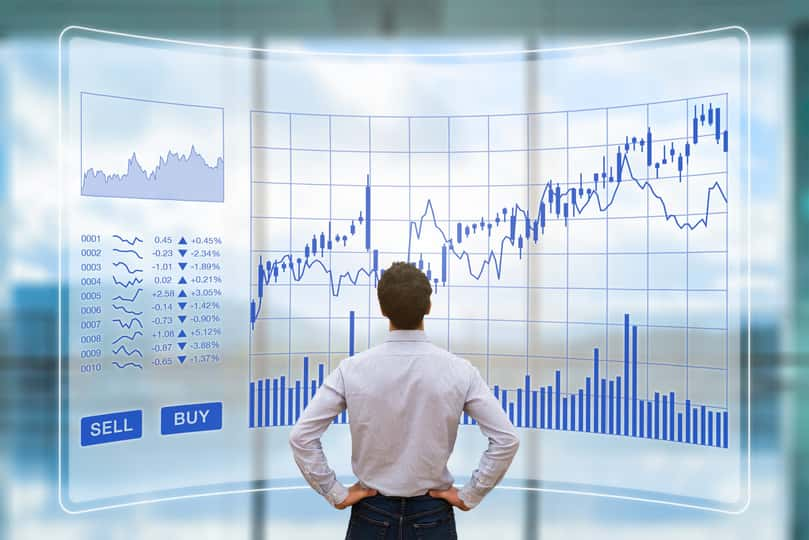Most Americans have probably never heard of HDFC Bank Ltd. (HDB - Get Rating), which is no surprise considering the bank has no branches in this country. But those who follow India’s business environment will be highly aware of the Mumbai-headquartered bank’s presence within that nation’s financial services industry.
Founded in August 1994, the $21 billion-asset HDB is India’s largest private sector bank, with more than 5,400 branches. The bank engages in commercial and investment banking on its wholesale side, consumer banking products and services on its retail side, and a treasury operations segment focused on investments, foreign exchange trading and derivative contracts. More than 60% of the bank’s loans are to retail clients, with working capital loans and vehicle financing accounting for nearly three-quarter of its retail lending. HDB also has a presence in Bahrain, Dubai and Hong Kong.
As of the end of HDB’s Q3 2021, the bank recorded $1.48 trillion in revenue and a net income of $272.54 billion. However, HDB hit a rough patch as the COVID-19 pandemic impacted India’s economy. Shares of HDB gained 11.09% this year on India’s stock exchanges, which marked the bank’s weakest performance in seven years.
The bank has also faced several major concerns. Earlier this month, the Reserve Bank of India ordered HDB to temporarily stop issuing new credit cards and to halt the planned activities for its Digital 2.0 program after outages were reported across the bank’s Internet and mobile banking channels and its payment utility services.
In September, three different U.S. law firms filed class-action suits in the U.S. District Court for the Eastern District of New York claiming that HDB violated securities laws by allegedly making false and misleading statements about its business, operational and compliance policies. The lawsuits also alleged the bank failed to maintain proper lending practices in its vehicle-financing operations. The bank has not publicly commented on these lawsuits, which are expected to go to trial in the spring.
HDB has been trading on the NYSE since July 2001. Here’s how our proprietary POWR Ratings system evaluates HDB:
Trade Grade: A
HDB is trading at $71.96, which is an all-time high for the stock. During the third quarter of this year, the stock attracted the interest of several A-list corporate investors: JPMorgan Chase & Co. (JPM) increased its holdings by 4.3% to 36.7 million shares, WCM Investment Management LLC upped its holdings by 2.6% to 25 million shares, and Morgan Stanley (MS) pumped up its holdings by 42.6% to 15.6 million shares. Today, HDB stock can also be found in the portfolios of 34 hedge funds.
Buy & Hold Grade: A
The stock’s proximity to its 52-week high is a key factor that our Buy & Hold Grade considers, and HBD has been turning in a peak performance recently. After tumbling with the rest of the market during the mid-March panic over the pandemic, the stock has slowly but steadily regained its momentum during the course of the year. The aforementioned troubles faced by the bank have not dented the stock’s performance.
Peer Grade: A
HBD is ranked #1 out of 44 stocks in the Foreign Banks category, which is no mean feat for a bank with no U.S. presence competing against TD Bank (TD), Deutsche Bank (DB), HSBC (HSBC) and other global banks with a highly visible U.S. presence.
Industry Rank: B
The average market cap-weighted POWR Rating for stocks in the Foreign Banks category is B (Buy).
Overall POWR Rating: A
HDB has checked all of the right boxes and earned an “A” (Strong Buy) grade in our POWR Ratings.
Bottom Line
HDB seems to have the stock market equivalent of a Teflon coating, as its recent problems have not slowed the stock’s upward movement. The faith that investors have placed in the stock could be attributed to the resilience of India’s economy – which, despite being in a rare recession, seems to be holding up stronger than its Asian neighbors – and the bank’s dominant presence within India’s financial services sector.
As we move into 2021 and the chaos of the pandemic should begin to fade, HDB will be in a stronger position than before the pandemic began. Which means this impressive stock should definitely be added to your watchlist in 2021.
Want More Great Investing Ideas?
9 “MUST OWN” Growth Stocks for 2021
5 WINNING Stocks Chart Patterns
7 Best ETFs for the NEXT Bull Market
HDB shares were trading at $71.94 per share on Wednesday afternoon, up $1.22 (+1.73%). Year-to-date, HDB has gained 13.52%, versus a 17.88% rise in the benchmark S&P 500 index during the same period.
About the Author: Phil Hall

Phil is an experienced financial journalist responsible for generating original content on the weekly Fairfield County Business Journal and Westchester County Business Journal, plus their respective daily online news sites, podcasts and video interview series. He is the winner of 2018, 2019 and 2020 Connecticut Press Club Awards and 2019 and 2020 Connecticut Society of Professional Journalists Award for editorial output. More...
More Resources for the Stocks in this Article
| Ticker | POWR Rating | Industry Rank | Rank in Industry |
| HDB | Get Rating | Get Rating | Get Rating |






